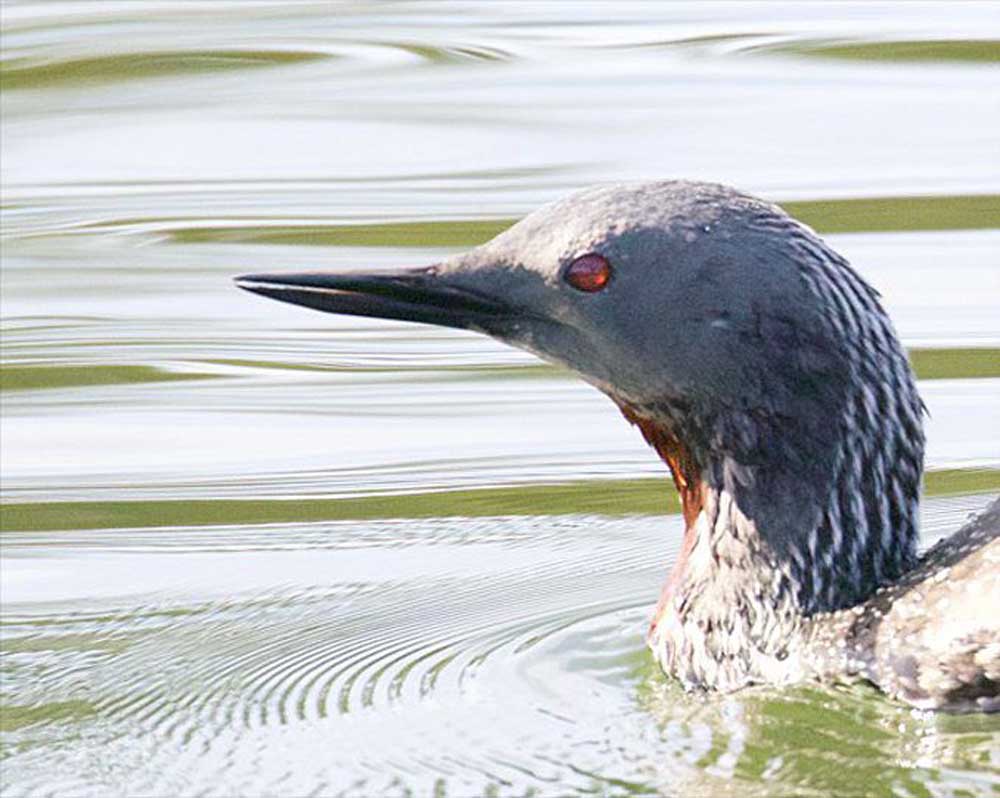Birdwatching Red-throated loon? More like red-throated divers
Published 9:25 am Friday, April 24, 2015

- A close-up shows this small loon's red throat.
Winter was not as good for loon spotting as it has been in the past. Common loons dressed in winter plumage are usually common as they often winter along the coast. The red-throated loon may also be seen in fall and winter. It was only a few years ago that a yellow-billed loon hung around in the Ilwaco harbor for most of the winter months. Many birdwatchers from a far came to the peninsula just to see this bird?
The good news is that loons are now beginning to show up in our harbors to feed before continuing northward to their breeding grounds. At least one red-throated loon made an appearance last week. It is our smallest and lightest loon, and is the only loon that is able to “leap into the air” from land or water and it has a red eye.
The red-throated loon is an elegant looking bird with a long snake-like neck and head. It holds its dagger like bill and head at an upward angle. As its name implies, this loon sports a deep red throat during the summer. You can see in the photo that this loon has just a hint of red on its throat. By the time it is ready to breed, its throat will be a rich red in color. Breeding plumage also includes a blue-gray face and blue-gray on the sides of the neck. The nape of the neck is black and white striped.
Loons are excellent divers. The red-throated loon is nicknamed, the “red-throated diver.” It can dive up to 90 feet below the surface in search of fish. It also eats amphibians, plant material and invertebrates.
You are likely to find loons on the ocean, in bays and in estuaries like Willapa Bay. This is a good time to look for them!



